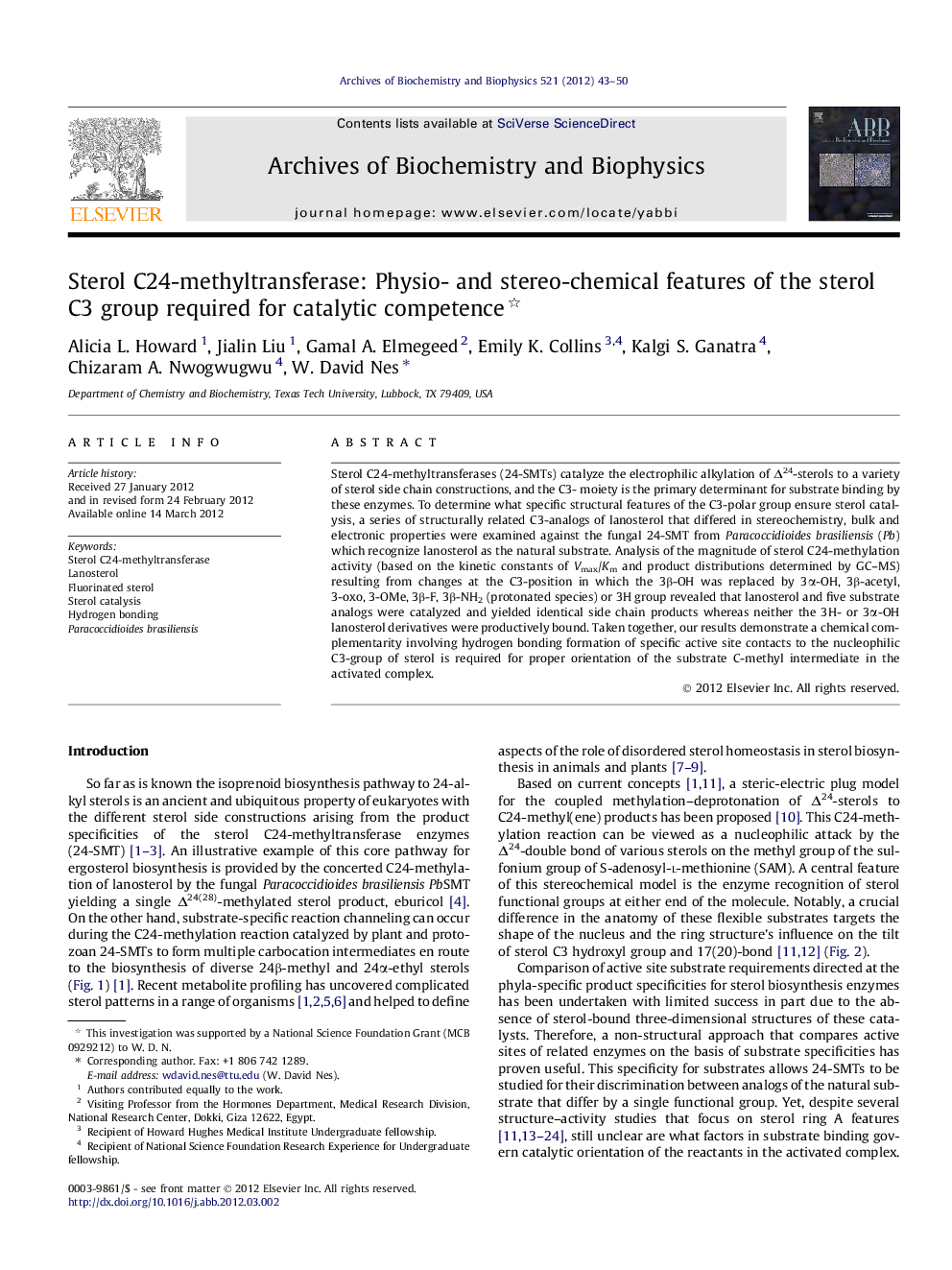| Article ID | Journal | Published Year | Pages | File Type |
|---|---|---|---|---|
| 1925567 | Archives of Biochemistry and Biophysics | 2012 | 8 Pages |
Sterol C24-methyltransferases (24-SMTs) catalyze the electrophilic alkylation of Δ24-sterols to a variety of sterol side chain constructions, and the C3- moiety is the primary determinant for substrate binding by these enzymes. To determine what specific structural features of the C3-polar group ensure sterol catalysis, a series of structurally related C3-analogs of lanosterol that differed in stereochemistry, bulk and electronic properties were examined against the fungal 24-SMT from Paracoccidioides brasiliensis (Pb) which recognize lanosterol as the natural substrate. Analysis of the magnitude of sterol C24-methylation activity (based on the kinetic constants of Vmax/Km and product distributions determined by GC–MS) resulting from changes at the C3-position in which the 3β-OH was replaced by 3α-OH, 3β-acetyl, 3-oxo, 3-OMe, 3β-F, 3β-NH2 (protonated species) or 3H group revealed that lanosterol and five substrate analogs were catalyzed and yielded identical side chain products whereas neither the 3H- or 3α-OH lanosterol derivatives were productively bound. Taken together, our results demonstrate a chemical complementarity involving hydrogen bonding formation of specific active site contacts to the nucleophilic C3-group of sterol is required for proper orientation of the substrate C-methyl intermediate in the activated complex.
Graphical abstractFigure optionsDownload full-size imageDownload high-quality image (119 K)Download as PowerPoint slideHighlights► Sterol C3–OH group stereochemistry and polarity are crucial to enzyme action. ► Lanosterol analogs modified at C3 were tested as substrates of sterol C24-methyltransferase. ► New model of substrate binding to sterol catalyst involves H-bond network around C3–OH group.
